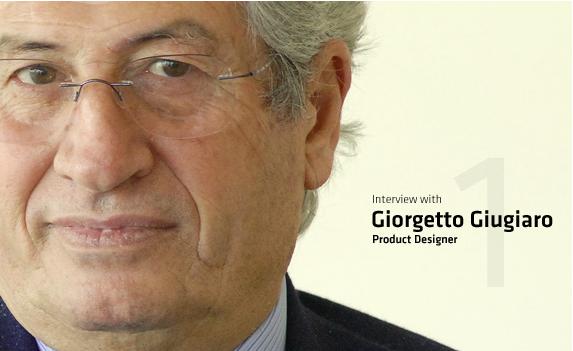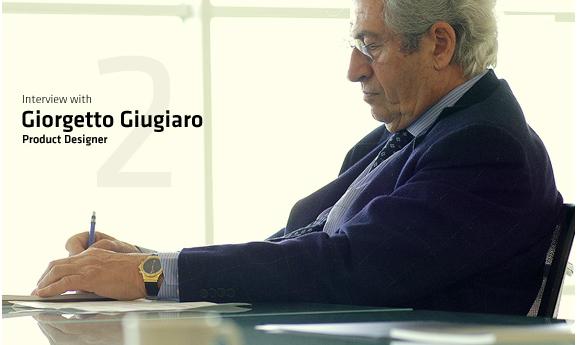|
Nikon camera design |
|
Nikon camera design |
From red line to triangle through ellipse
|
|
In 1976, The Ital Design office directed by Guigiaro designs, for VOLKSWAGEN, a new car: the Golf. Quickly, this car is a worldwide success and becomes the reference for all the others car manufacturers.
The Golf model GTI becomes the most known and the archetype of the small sport car and it develops a new car generation that continue more of ten years. |
|
 |
At the same period, Guigiaro starts the design of cameras for Nikon. The designer Colani works for Canon, Guigiaro begins a long relationship with Nikon. His first camera, the Nikon EM, launches in 1979, is looking as one of another of his creations: the FIAT Panda. |
|
 |
From this date, all Nikon cameras, SLR or compact will have this distinctive sign of the mark. The Nikon F4, launched in 1988, has also a painted red line, more discreet and which is in contradiction with the bio design of this period. |
 |
With the launch of the Nikon D2H in 2003, Guigiaro, who has again designed this model,
abandons the ellipse and replaces it by a red triangle. This triangle is a reference the "triangle, square and circle" of Zen Philosophy and a direct remember of
Nikon F. |
rom comma to broken line

Nikon D850 and Nikon Z6 In 2012, the Nikon D4, always designated by Guigiaro, presented a red "comma" which replaced the triangle on the D5100, D4, D800. pierre j.

This comma changes depending on the model until it is more marked on the Nikon D850 or D6, less on the D780.
Ital Design is bought by Lamborghini and Audi in 2010, Giorgetto Giugiaro stops his collaboration with Nikon in 2013 after the Nikon Df.
In 2018 with the presentation of the Z hybrid camera series designed by the Nikon design office, the comma disappears, giving way to a discreet red reminder in the form of a broken line on the side of the cameras.
Interview Giorgetto Guigiaro
from the site Nikon http://nikonimaging.com/

Designer's mission is to produce something that is attractive.
Visually fun elements passed down to present models as well.
|
- Mr. Giugiaro, you have been forming a positive relationship with Nikon for over 20 years since you have first designed the "Nikon F3," which was launched in 1980. What do you keep in mind when designing a camera? |
|
|
I try not to meddle with anything needlessly. From the outset, Nikon cameras have always had highly functional and delightful shapes. As I was involved in automotive design then, the company asked me to add ergonomic features and a visual attractiveness to that form. Nevertheless, there are many cases where decisions are made jointly with engineering designers when designing a camera. Necessity based on technological theory is unveiled in the process. Many minor changes based on technological theory have to be made, so in that sense it is a constructive process. Therefore, visual beauty is also a result of engineering design by the professionals. For the Nikon F3, I added a red line to the professional-use camera, which used to be entirely black. I sought to make that the hallmark of the Nikon F3 through a bit of graphic flair. In other words, I added a bit of fun to it. Fortunately, the company likes the addition of the red line. I am delighted that the company still uses it extensively to give a family feel to Nikon's camera line. |
|
- Where did that idea come from? |
I first thought of making the camera easily identifiable inside a travel bag. If a camera is all black, it might be hard to find it quickly. So I thought of adding a noticeable red line.
The idea of adding color is something quite natural to me. Automobiles were all black once upon a time, and later came to incorporate many colors, and as you all know, are now like a flood of various colors. I felt that the same visual pleasure was important for cameras as well. I also wanted to avoid placing too much emphasis on the "professional" aspect. I didn't want amateurs to think that, "It's for professionals, so it's beyond my reach."
In addition, Italians are very conscious of contrast in fashion as well. I think this must also be a pertinent factor. Even when selecting what to wear everyday, we always keep contrast in our mind. I wanted to somehow incorporate that concept in the design of the camera.

Design is like constant competition.
|
- Then, what do you generally keep in mind when you're at work designing? What is produced from the designing process? |
I think that design is like constant competition. It's the same in sports: the one who reaches the goal the fastest wins. The "goal" in this case is a design of a completely new form that nobody has ever thought of before. There are always innumerable possible forms for a product. Among these, I must find what new aspects I can suggest. Finding that new aspect becomes a challenge.
|
|
When designing, I try to keep in mind the size of the mechanical device I am trying to design, or actually make a mock-up of the same size. In doing so, I realize that it is necessary to add something new - a small aspect of my idea - as a part of the process. Designers who do not notice it say, "There's nothing left unconsidered. I can't find anything new that I should add." To such people I would say, with a certain irony, "You ought to quit being a designer if you don't notice these things." I always have a feeling that I want to try new forms, feels, graphics and colors ahead of all other designers. Achieving this remains a continuous challenge of mine. The ancient Greek philosopher Aristotle once stated that "Art is imitation." An artist is anyone who imitates the natural masterworks that surrounds them, including the humankind and scenery of the real world. "Imitation" is not the same as "copying." It does not generate two identical things; rather, something new is created through the addition of something original to the process. I therefore think that a designer can be an artist if he or she generates a new form by finding a source of inspiration from the natural world. |
|
|
There is one more important aspect to the designer's work. The designer must always be aware that popular appeal depends a great deal on proportion. For example, the shape of pyramid is geometrically quite simple. If you make a square pyramid 20cm in height, it's too simple to catch anyone's attention. However, everyone admires the pyramids in Cairo, Egypt, at about 200m in height, saying, "This is awesome." Some proportions may be too simple and unnoticeable when small. However, people realize that such proportions themselves are wondrous when built on as large a scale as a pyramids in Egypt. Therefore, a designer must always be aware of proportion when designing anything. |

Your daily surroundings are always full of stimulation.
|
- From where do you gain inspiration for your designs? |
Inspiration is inherently an orderly process that can be gained through a state of unconsciousness. For example, it can dawn on you when you observe something to which other people may not pay much attention, during your daily life such as talking with someone, staring out of the window, enjoying an art exhibit or watching a movie. There are many things that become stimuli only after you involve yourself in design.
|
- Isn't some kind of training necessary in order to become sensitive to receiving such stimuli? |
Well, yes, sensitivity can be cultivated through everyday practice, just like sports. However, it is nothing special. If you are designing a TV set, you look at every inch of the shapes of existing TV sets and amass them in your head. Then you add your idea or stimuli to the mix. By doing so, you can create a shape with the capacity to catch people's interest and surprise them. What is important here is that it must be something attractive.
Then, what is it about being attractive? People are attracted to things that are new, or to new proportions that are well studied, even if the person cannot understand this new concept at all.
Maybe this can be easily understood by way of a comparison with music. Music experts can understand the beauty of harmony by looking at musical notes displayed on the score. For example, like Beethoven, they can compose wonderful music even if they cannot hear. In contrast, people who do not have expertise in music have no understanding of why specific harmonies are beautiful. Even so, many people are attracted to music. I believe that the mission of the designer, as an expert in design, is to provide something that captivates people's hearts.
|
- I've heard that you have started taking photos yourself since to the beginning of your work with Nikon. What kind of photos do you prefer taking? |
|
|
|
|
When I wanted to become a painter, I preferred drawing portraits. However, my photographic subjects are not people's faces but nature: mountains, deserts, rivers and oceans. People frequently appear in the photo, but I don't focus on people. Nevertheless, I still like to draw human beings when I draw pictures. Why? I'm not quite sure of the reason myself.
When taking photos, I usually ride a motorbike and go into mountains alone. I love taking photos of the mountains with their various features, in clear weather, rain, fog and snow. The motorbike I've ridden into the mountain occasionally appears in my photo. Because of the bike, the grandeur of the mountains stands out. Maybe I am unknowingly practicing assessing proportions.

Design is meaningless if it is not realized.
|
- Mr. Giugiaro, you have been designing assorted items, large and small, including automobiles, cameras, watches and even macaroni. If you were to receive an order now to design anything you like, what would you design? |
I would love the challenge of designing a building. There is simply vast number of factors inherent in the completion of a building. For me, an imagination similar to that necessary for designing a spacecraft would be necessary, and it would be very exciting.
I am a person who feels joy in designing realistic things. When I was still working at Fiat, I saw sketches of future cities and future products in a U.S. magazine. However, more than 50 years has passed since then, and none of that imagined vision had been realized. If unrealized, it's the same as simply drawing a picture, isn't it? No matter how beautifully you draw, a picture is merely a picture. It does not produce anything in and of itself.
Therefore, I'm not interested at all in designing things that cannot be realized. I always feel that I want to start working with something that is feasible, both physically and economically. For instance, I want to design huge complex buildings like those by U.S. architect Frank Gehry. There are many stylish buildings being created, especially in U.S. cities. My dream is to design such a building.
|
- Then, what kind of product would you want to make if you were to produce further cameras for Nikon in the future? |
If there were no technical restrictions, I would want to make something with a fantastic design and shape - something that would surprise people, along the lines of, "Oh, how wonderful this objet d'art is! What is this? Oh, you can take pictures with it too?" I'm not sure if Nikon would allow me to do that, though (laughter). I would be delighted if I could realize that dream someday.
